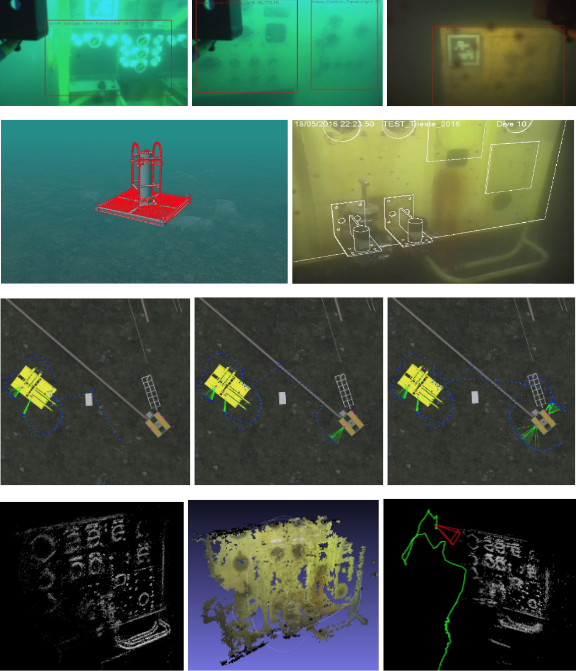Underwater robots (UID, Underwater Inspection / Intervention Drones) represent essential tools for carrying out complex assembly and maintenance operations of plants in underwater environments. The growing interest in highly sustainable offshore energy hubs will make these tools even more important, since they can carry out heavy but necessary operations in underwater environments in a totally safe way. The SubEye project has the ambitious goal of providing the UIDs developed by the project partner Saipem with an advanced autonomous perception system capable of increasing their productivity and effectiveness.
The SubEye project involves several perception modules (Fig. 2) used to detect, classify and estimate the position of objects of interest, to locate the UID within the working area and to reconstruct the 3D structure of the surrounding environment or of parts of interest. The obtained results will represent the backbone of a control system that will allow UIDs to perform complex operations on submarine infrastructures in total autonomy.
|
|
In the two images the FlatFish, indicated for inspection operations. Both are designed to operate in wire-guided mode (ROV) or in AUV mode(Autonomous Underwater Vehicles), to perform autonomous missions following a given plan. |
The hostility of the underwater environment, combined with the lack of any communication infrastructure and global positioning, introduce important scientific challenges. They will be addressed by introducing innovative solutions in the fields of computer vision, the generation of synthetic datasets and the integration of sensory information from heterogeneous sensors.
|
|
In the two images the FlatFish, indicated for inspection operations. Both are designed to operate in wire-guided mode (ROV) or in AUV mode(Autonomous Underwater Vehicles), to perform autonomous missions following a given plan. |
The advantages provided by the developed technologies are several: the higher productivity and the consequent savings will allow the use of UIDs in a massive way, increasing the possibilities of sustainable exploitation of the sea. In addition the UIDs equipped with the SubEye system will be designed to be used as offshore resident systems, so they don't require the continuous use of a dedicated support vessel, with undoubted advantages from an environmental and personnel safety point of view.
 |
Objectives of the SubEye system: (First row) Detect and classify objects of interest; (Second row) Accurately estimate the location of infrastructures and parts of interest; (Third row) Locate the UID within the working area; (Fourth row) Reconstruct the 3D structure of the surrounding environment or of parts of interest. |
https://pabriksepatubandung.com/












